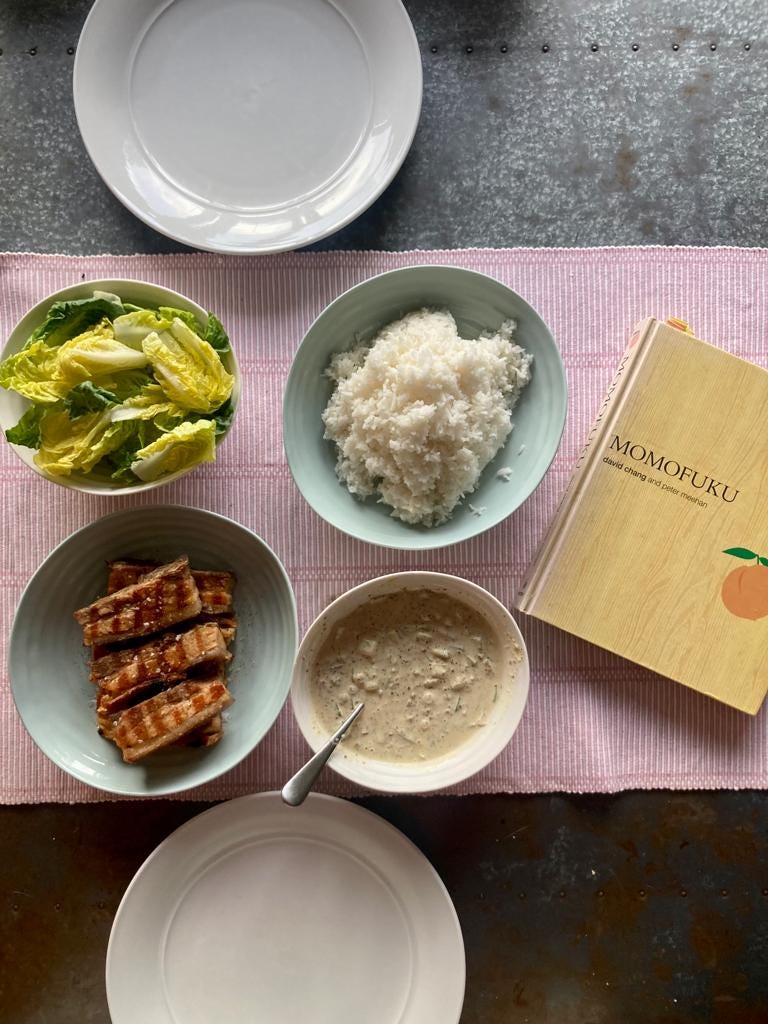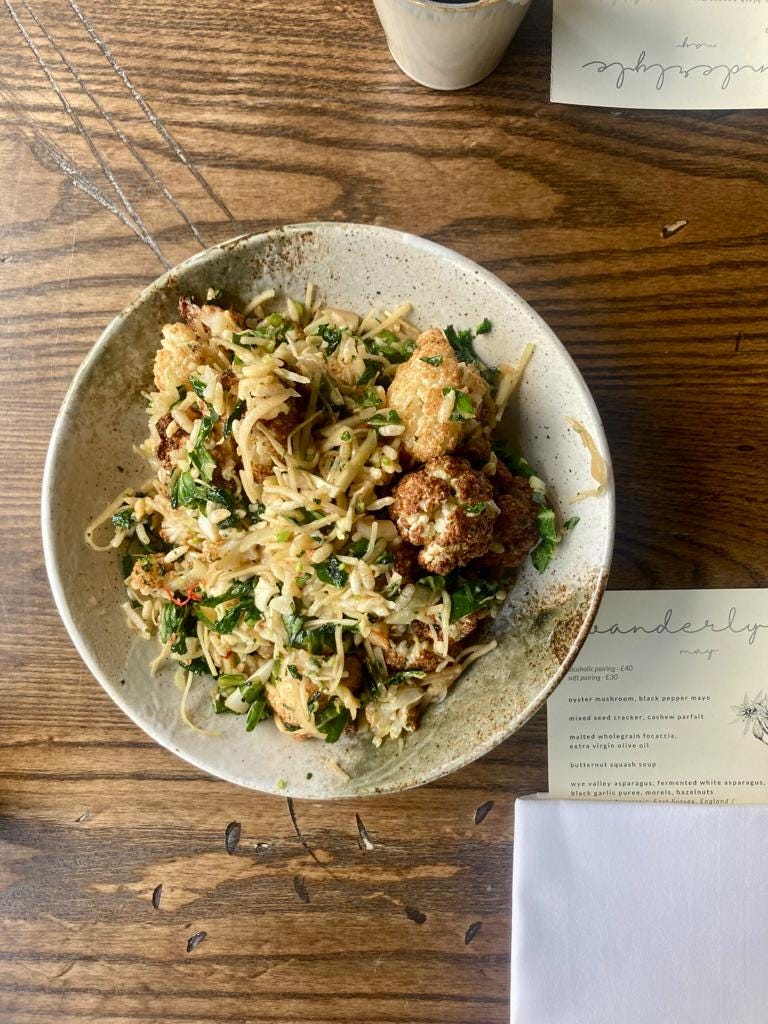The winter of 2009/10 was a strange time for me. Between July and October I’d been filming Masterchef: the whole series had been shot, including the final, but an air date had not been confirmed. The resultant limbo was ethereal - like I’d been strapped into a rollercoaster that remained still and silent in the station, ready to lurch into the ride. I had no idea what to expect and effectively hibernated for what seemed like an eternity, passing the time the only way I really knew how: undertaking several lengthy and ambitious cooking projects. Many of those were from David Chang’s debut book which I’d received for my birthday that year.
In the intervening years some of the big ticket recipes in the book (ginger-scallion noodles, pork buns, chicharrón, chicken wings) have made their way solidly into regular circulation but many others have remained ignored, despite being read several times over. It was time to right this wrong, hence the book’s inclusion in my #FiftyTwoCookbooks project.
During the six years I ran the Hole in the Wall, I must have cooked pork belly at least once a week. For professional kitchens it’s an ideal cut of meat to have en place - simple to prepare in batches, incredibly versatile, supremely tasty, easy to slot into various parts of the menu with the ease of a highly-experienced understudy and a genuine crowd-pleaser for the reason that few people cook it (or cook it well) at home.
The technique I favoured was improvised from Chang’s book, but it’s a common method in kitchens the world over: the belly is brined, slowly braised or roasted, and then pressed and chilled overnight before being portioned (the pressing and chilling makes it incredibly easy to transform into neat little rectangles). These portions can then be reheated in a hot oven, seared in a pan or even under a grill. If you’re lucky the skin will puff up and blister into fabulously light crackling (although we always had some chicharróns ready to go, just in case).
Now that my professional focus has shifted to vegetable cookery, I find little reason to prepare pork using this method. Not only is it time consuming, it’s also almost impossible to do with smaller cuts of meat and there’s no way I can justify buying an entire belly just for the two of us. But after catering a wedding I found myself with a few offcuts that needed a home – and so they sat in the freezer for a few days until I stumbled upon Chang’s recipe for sam gyup sal ssäm with mustard seed sauce.
The slices of belly, burnished to dark brown on the barbecue, were - of course - delicious, but the real revelation was the mayonnaise-based mustard seed sauce, pepped up with pickled cucumber. Sam gyup sal translates to ‘three-layer fat’; who knew that the addition of a fourth in the form of mayonnaise would make it even more delicious?
Fat also plays a surprising role in the book’s recipe for fried cauliflower with fish sauce vinaigrette, in that there isn’t actually any in the dressing itself, which is a variant of the classic Vietnamese condiment nuoc cham. Even when making an austere salad I will add some sort of oil to the dressing itself, but not so here. Instead the cauliflower (or brussels sprouts) carries the richness by virtue of being deep-fried, which remains the single best way to cook both these particular brassicas. The relatively low sugar content in cauliflower allows it to cook to a high degree of caramelisation without tasting bitter: this was the secret to the legendary cauliflower cheese of which we served hundreds each week at the pub (and which actually saved us from going under, but that’s another story for another day).
Here the deep fried cauliflower, still with a little bite, is then dressed with the sweet, sour, salty and fiery dressing and finished with plenty of fresh mint and coriander, with puffed rice seasoned with schichimi togarashi providing some textural nuance. It’s a recipe that punches far above its weight category and manages to be both satisfying and filling without the usual sluggishness from eating fried food. An absolute revelation.
Thank you, as always, for reading this, and for your support and comments: I love hearing from you so please, don’t be shy. Next week’s book is Joshua McFadden’s Six Seasons.
In other completely delightful news, Vanderlyle was recently listed in the Good Food Guide with a rating of ‘very good’ - I’m so proud of the entire team who have worked their collective socks off to earn this accolade, and we’re humbled to be listed alongside some truly excellent company, both on a local and national scale. The Guide is also looking for nominations for their ‘Best Local Restaurant’ Award: if you felt able to put us forward, we’d very much appreciate it, and you can place your votes here. If you would like to book a table with us, as ever, you can do so through Tock: hope to see you at the restaurant soon.





